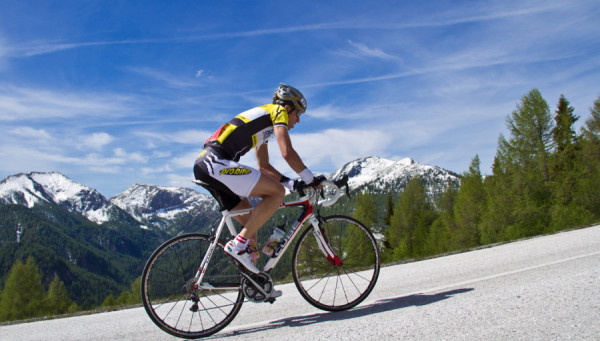If you are looking for that killer workout that will take you to the next level in your biking, chances are, we have what you are looking for. Most training books will refer to this workout as 2x20s, but most cyclists tend to refer to it using some variation on the words ‘pain’, ‘torture’ and ‘excruciating’. Never fear though, you are made of tougher stuff than most, and a little pain goes a long way!

The Benefits of Interval Training
The benefits of interval training are numerous, which is why it has been a mainstay technique used by fitness professionals throughout the world, in addition to a lot of cyclists.
Efficiency – Interval training is designed to get you the best results in the shortest amount of time, so you will find that you end up spending a lot less time on your workouts.
Fat Burning – The intense effort required in an interval training program means that you will burn a lot of fat much more quickly than you would with standard riding. You also boost your body’s repair cycle during interval training, which means that you will lose more calories and fat following the completion of the workout than you would after a standard ride.
No Equipment Needed – One of the main sticking points of going to the gym to build power is that you need to use equipment other than your bike. In doing so you aren’t improving your technique and you’re often spending money to get results. Interval training just needs you and your bike to get the job done.
Challenge – No workout is going to keep your attention for long if it doesn’t offer a challenge and, even worse, it will start to lose its effectiveness if you find you can do it easily. Interval training is never anything less than a challenge, especially because intervals can often be scaled up to become harder as your body improves.
2×20 Cycling Intervals
 Here is what you will need:
Here is what you will need:
- Yourself
- Your bike
- A place where you can bike without having to stop for at least 20 minutes (I often use a 1-2 mile loop course for this)
The workout is fairly self-explanatory – you are going to ride two 20 minute efforts. In between is a 3-5 minute slow recovery pedal. You will want to pace your effort such that you maintain a steady pace throughout the first effort that leaves you feeling pretty tired, but knowing you held back a bit. For the second effort, you still want it to remain relatively even paced, but you should be about as close to falling over as you can push yourself. If you’ve done things right, your efforts should be about the same pace (or power level, if you happen to be using a power meter).
Why is this workout so beneficial? For starters, it is going to make you tough. The more times you do this, the harder you will be able to push yourself in that second leg, and that will translate directly to endurance at the end of a race.
Why It Works
To look at things a bit more technically, this workout targets what physiologists call your Functional Threshold Power, which refers to the maximum effort level you can maintain before lactic acid production begins to sharply increase. In simple terms, it is about the level you can maintain for an all-out 1 hour effort. Why is this so important? Well even if you don’t race in time trials very often, increasing your FTP means that any given aerobic effort will be easier. This allows you to recover faster after a hard surge in a race, or have more left in the tank for a final sprint after the pace ratchets up in the last few kms of a race. All of that sounds pretty damn good, doesn’t it? What are you waiting for?